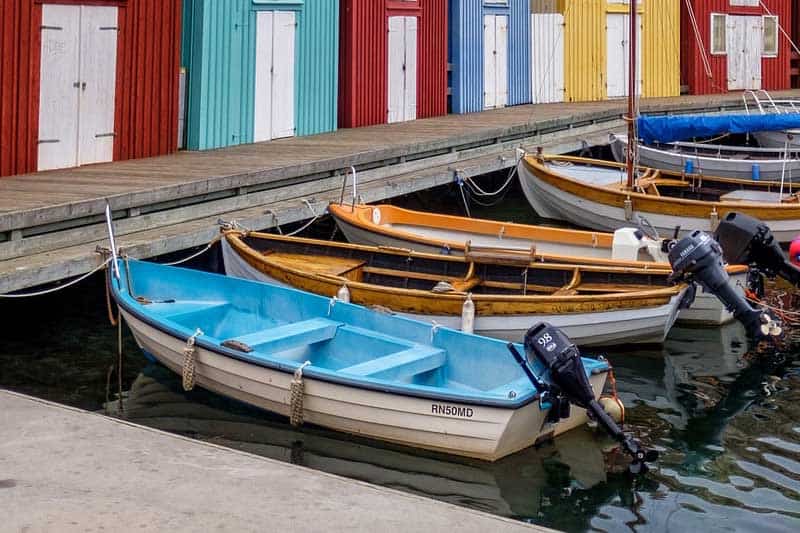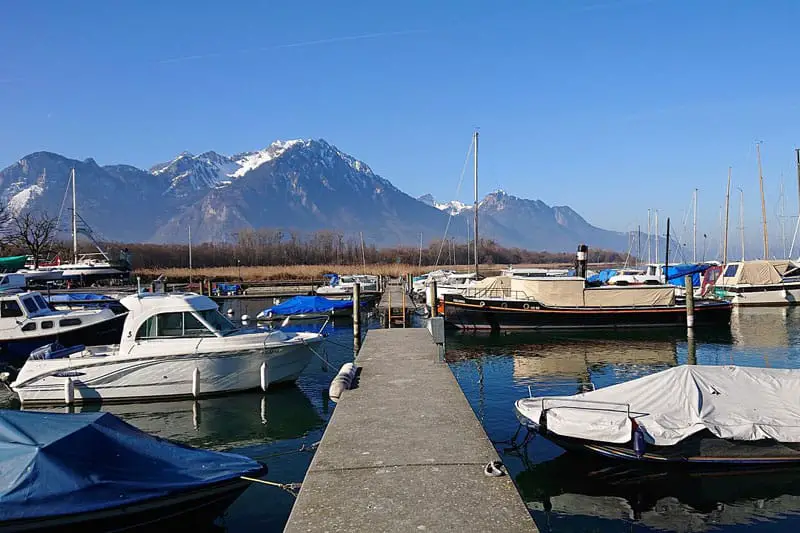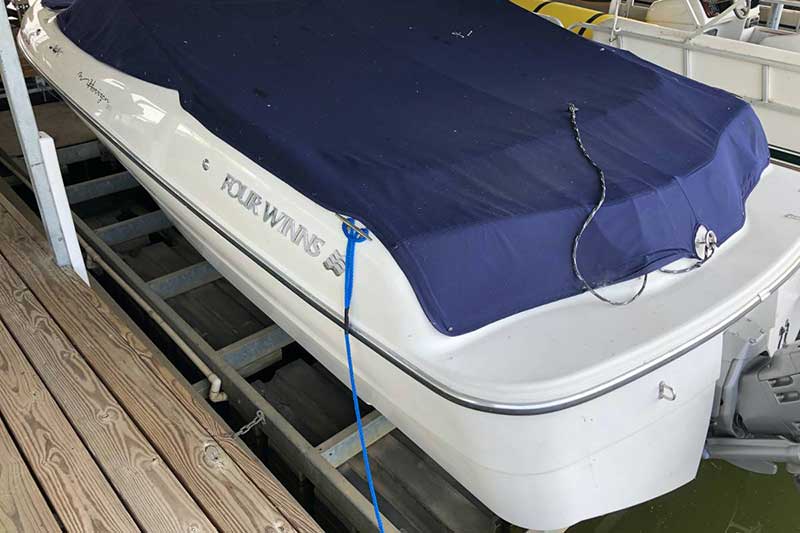Freshwater boats are any boats used on lakes, rivers, or canals. If you want your boat to be ready for use anytime during the year or don’t want to pay for the costs to store your boat on land, you’re probably thinking: how long can you leave a boat in freshwater? We have answers for you! Read on to learn more about leaving your boat in the water and what protective measures you need to consider.
How long can you leave a boat in freshwater?
Since freshwater is less corrosive than saltwater, you can typically leave your boat in the water for 3 to 4 weeks without any damage. However, the specific duration the boat can stay in the water without risks will depend on the type of boat, the water temperature, water currents, and what living organisms live in the water. If your boat doesn’t have bottom paint, you may find algae growing on the hull within 4 days.
There are also other risks of leaving your boat in the water for extended periods of time, such as freezing, growth, blisters, and moisture build-up. Most people stick to the general guidelines of leaving their boats in the water for no more than 30 days. However, boats with proper protective measures can be left in the water year-round. Some people only take their boats out of the water every 3 years to repaint and clean the bottom.
Is it bad to leave a boat in the water for extended periods?
Not always. However, leaving your boat in the water year-round does come with multiple risks to consider. For example, mold and mildew thrive in wet environments and leaving your boat in the water can promote their growth even in the interior of your boat. Letting your fiberglass boat dry out on land every few weeks will prevent the development of osmotic blisters on the hull. You can also dry out any water in the bilge that can cause condensation getting into your electrical components and engine.
Well-protected boats can typically stay in the water for 30 days without damage or even a year when properly cared for during changing temperatures. However, it is very bad to leave a damaged boat in the water. Suppose your boat has cracks and needs repairs or doesn’t have bottom paint or a barrier coat. In that case, you’ll want to repair it first before considering water storage options.
Even all winter?
Yes, you can leave your boat in the water all winter. Sometimes, boats in the water are less vulnerable to sudden freezes since the surrounding water retains heat longer than air. However, you still need to have proper protective measures in place. As previously mentioned, you want to make sure your boat isn’t damaged and has adequate bottom paint and barrier coatings.
If you live in an area where ice forms on the water, you’ll want to be prepared to prevent damage from ice formations. Thin films of ice are usually less risky. However, thick ice can crush your boat. You can use ice-eaters or a bubbling system to prevent ice from thickening around the hull.
Other tips for winterizing your boat left in the water include:
- Cover your boat with shrink wrap or a permanent canvas cover
- Make sure your bilge pumps are working throughout the winter with battery power
- Tilt the outboard out of the water, if possible, to prevent damage to the metal
- Close all the thru-hulls on the boat so water doesn’t get into your boat
- Always check on your boat and inspect it for any signs of damage, including on the hull and cover
The affect on different materials
Fiberglass boats
The biggest risk of leaving your fiberglass boat sitting in freshwater is the development of blisters. Blisters, or osmosis, develop when water is absorbed through the gel coating on your hull and causes the hull paint to bubble. To protect your fiberglass boat and keep it longer in water, you have to seal it with a barrier coat to block water from entering and forming blisters on the fiberglass.
Wooden boats
Besides the algae that can form on the bottom of your boat, freshwater is also the main culprit for wood rot. Wooden boats in saltwater are more protected against rot. However, the fungus that causes wood rot needs warmth and freshwater to grow. When dirt accumulates in the crevices of your wooden boat, it holds moisture and creates the perfect condition for wood rot. This is also why you shouldn’t clean your wooden boats with freshwater washdowns.
Wooden boats left on the water for extended periods of time must have a thorough exterior paint or varnish coating. This added layer will help separate the wood from the moisture issues. However, always be aware of cracks in the paint or varnish if your boat is left in the sun for extended periods.

Can freshwater plants can ruin boat hulls?
Algae and lake weeds are major issues in freshwater when they start growing on the hull. Freshwater can also be filled with other plants and animals trying to colonize the boat, such as mollusks attaching to the hull. The speed that algae start growing will depend on the water conditions and types of organisms in the water. Typically, if your boat doesn’t have bottom paint, it will take 4 days for growth to begin and gets harder to clean off the longer time passes.
To prevent plant-matter growth on the hull and be able to leave your boat in the water for longer periods, you’ll want to have bottom paint. This paint contains biocide and copper that slowly releases and stops the growth of algae and weeds.
Conclusion
A well-protected boat without damage can easily stay in the water for over a month or year. However, you still need to regularly check your boat and be on the lookout for the various damages that can occur to it. This will vary depending on your boat’s material and the temperature conditions outside.

